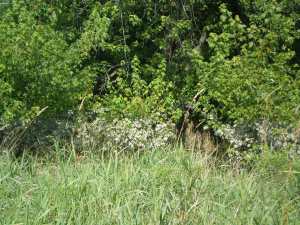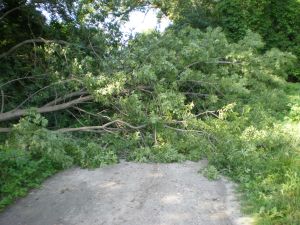The research sponsored by a SARE Partnership Grant examines a small depression in a currently cultivated field that is prone to flooding for soil fertility changes that correlate with elevation. In a way, the data found can also be used to extrapolate how soil fertility changes with duration of water saturation. The site we are studying is located on the Intervale Community Farm in Burlington, Vermont
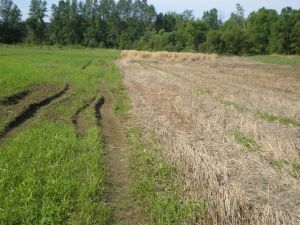
Intervale Community Farm. The small field depression is located under the brown stalks to the right of the tire tracks.
On the way back from the Intervale Community Farm, I noticed the waterline on the trees from the flooding that occurred from the downpours we had earlier in the summer.
The research sponsored by a SARE Graduate Grant examines how cover crops can ameliorate soil damage associated with flooding on three flood-prone sites: Intervale Center land, Adam’s Berry Farm, and Arethusa Farm. At each site, four replicates of cover crops are randomly ordered. The effects on soil health of lupine, winter rye, hairy vetch, forage radish, and a blend of all four of these will be compared each other and fallow plots.
My path to see the research site remaining in cover crop (due to prolong saturation) on Intervale Center land was blocked by a fallen tree.
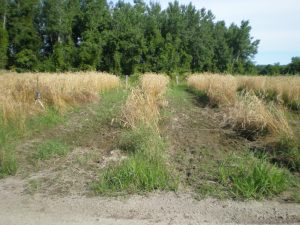
The research site on Adam’s Berry Farm needs some more cultivation before corn can be planted. Rain is in the forecast and may delay field preparations.
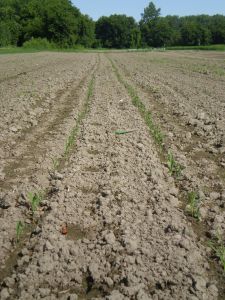
The corn at Arethusa Farm has come up. Unfortunately, the disuniformity of the soil caused an irregular seeding rate.
Upcoming plans for the research sites include one last round of soil samples, planting corn by hand at Adam’s Berry Farm (this will guarantee that germination rate can be accounted f0r), and tissue analysis of the corn crop.
